A comparative study of the efficacy and safety of radiofrequency ablation and botulinum toxin A in treating masseteric hypertrophy
- Authors:
- Jin‑Long Huang
- Gang Chen
- Xiao‑Dong Chen
- Bing‑Rong Zhou
- Dan Luo
View Affiliations
Affiliations: Department of Esthetic Plastic Surgery, The First Affiliated Hospital of Nanjing University of TCM, Nanjing, Jiangsu 210029, P.R. China, Department of Dermatology, The First Affiliated Hospital of Nanjing Medical University, Nanjing, Jiangsu 210029, P.R. China
- Published online on: February 17, 2014 https://doi.org/10.3892/etm.2014.1552
-
Pages:
1203-1208
Metrics: Total
Views: 0 (Spandidos Publications: | PMC Statistics: )
Metrics: Total PDF Downloads: 0 (Spandidos Publications: | PMC Statistics: )
This article is mentioned in:
Abstract
The aim of the present study was to evaluate the effects of two treatments for masseteric hypertrophy. In total, 24 patients with masseteric hypertrophy were enrolled in this study. Patients were randomly divided into two groups: 12 individuals were treated with radiofrequency (RF) ablation and 12 patients received an injection of botulinum toxin A. The thickness of the masseter muscle under tension was measured using ultrasound and clinical photographs were captured prior to treatment and at 6 and 12 months following treatment. Complications were observed during 12‑month follow‑up. In the group injected with botulinum toxin A, masseteric muscle thickness decreased to the lowest point 6 months after the injections but increased until 12 months after injection. However, in the group treated with RF ablation, muscle thickness decreased steadily over the 12 months following surgery. Therefore, the results of the present study indicated that the effect of RF ablation on the thickness of the masseter muscle may be much larger than that obtained following injection with botulinum toxin A.
View Figures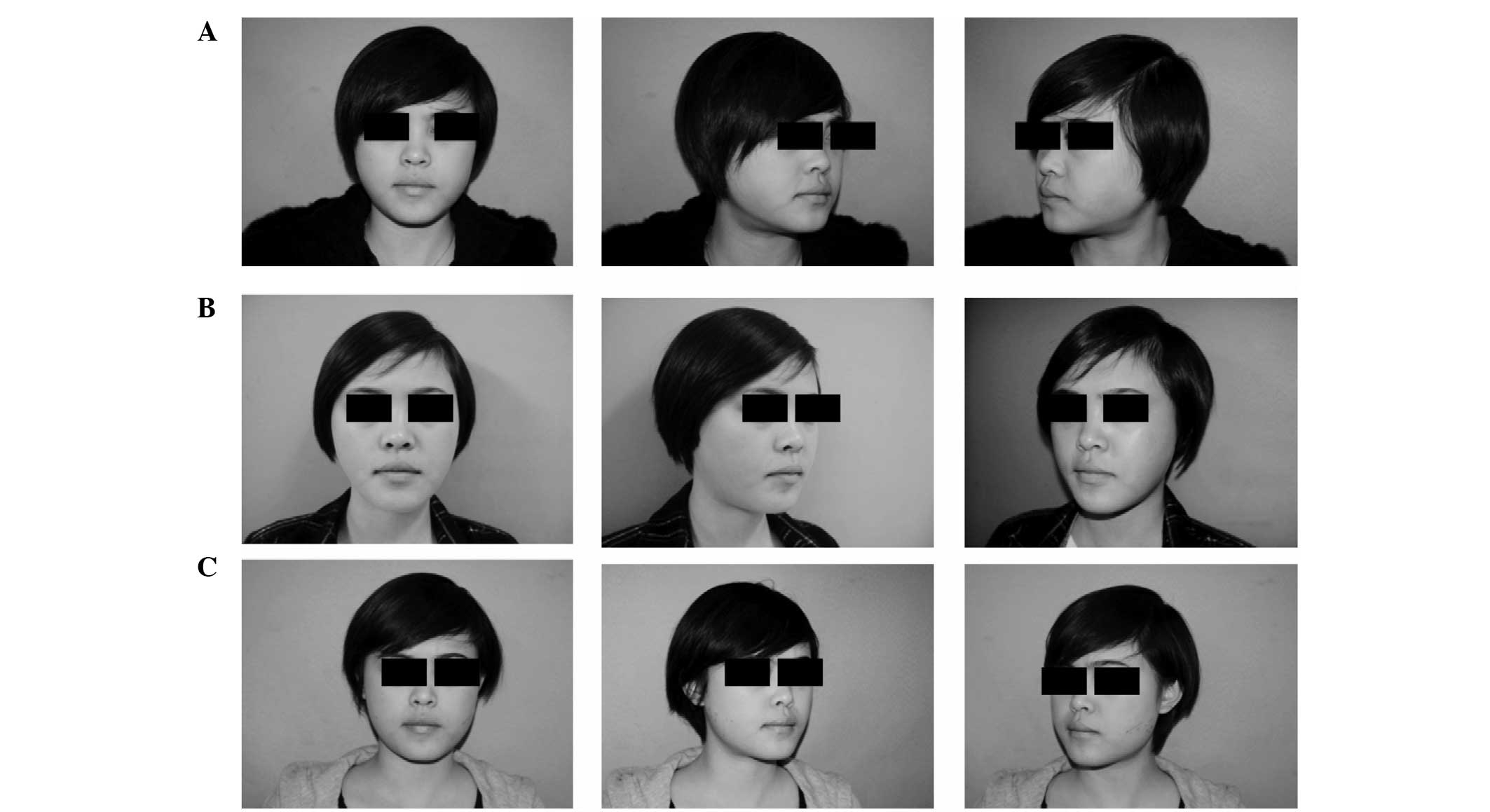 |
Figure 1
|
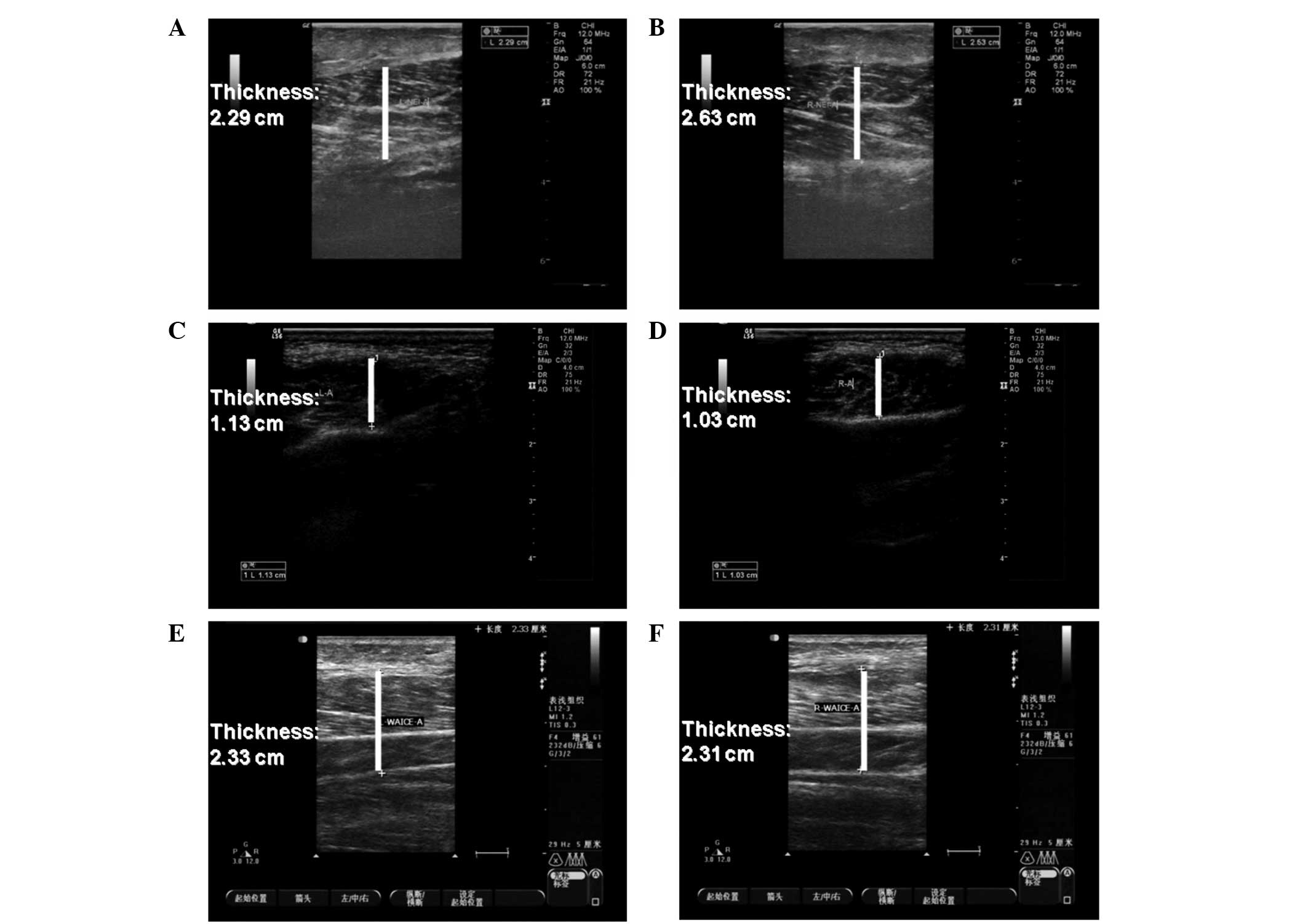 |
Figure 2
|
 |
Figure 3
|
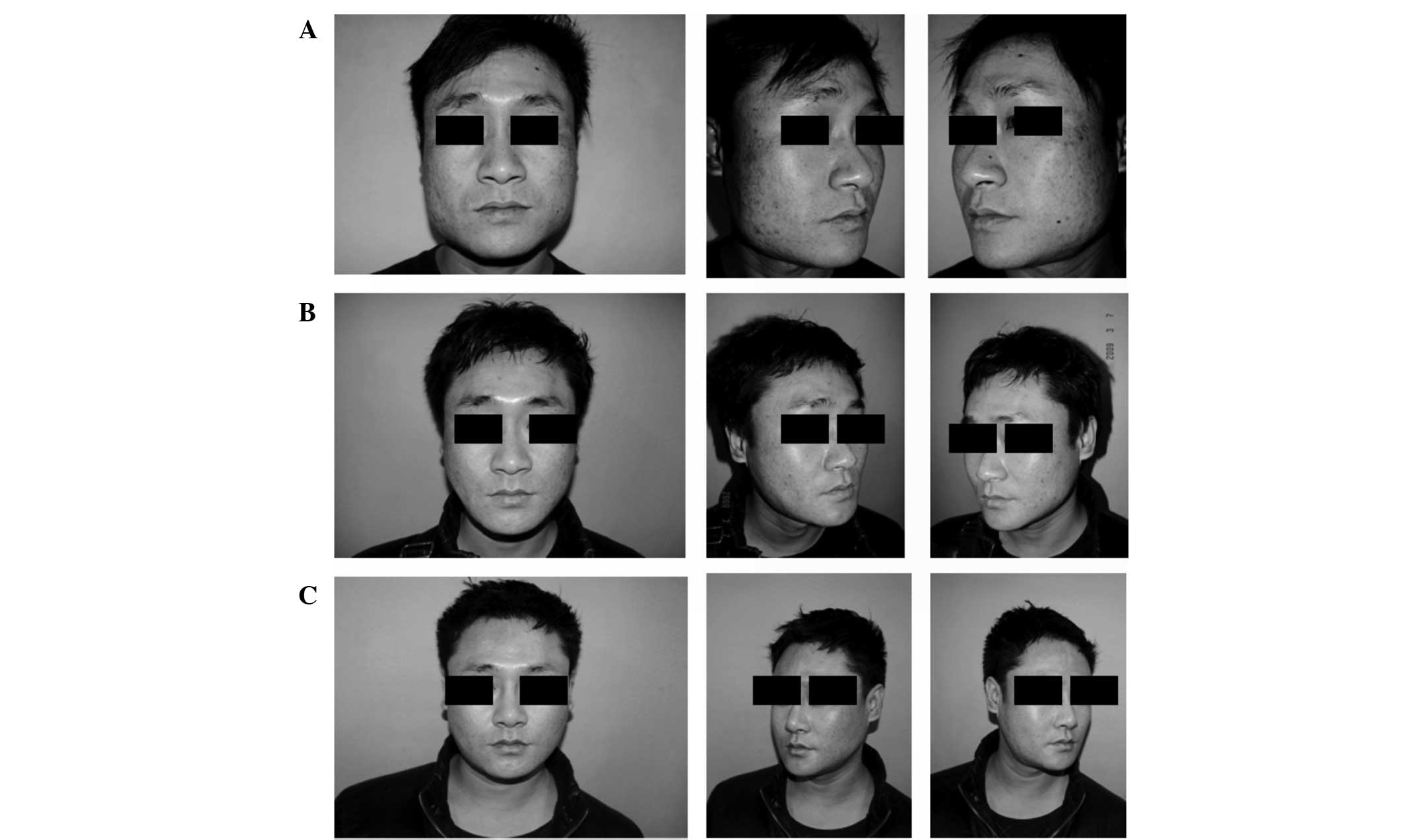 |
Figure 4
|
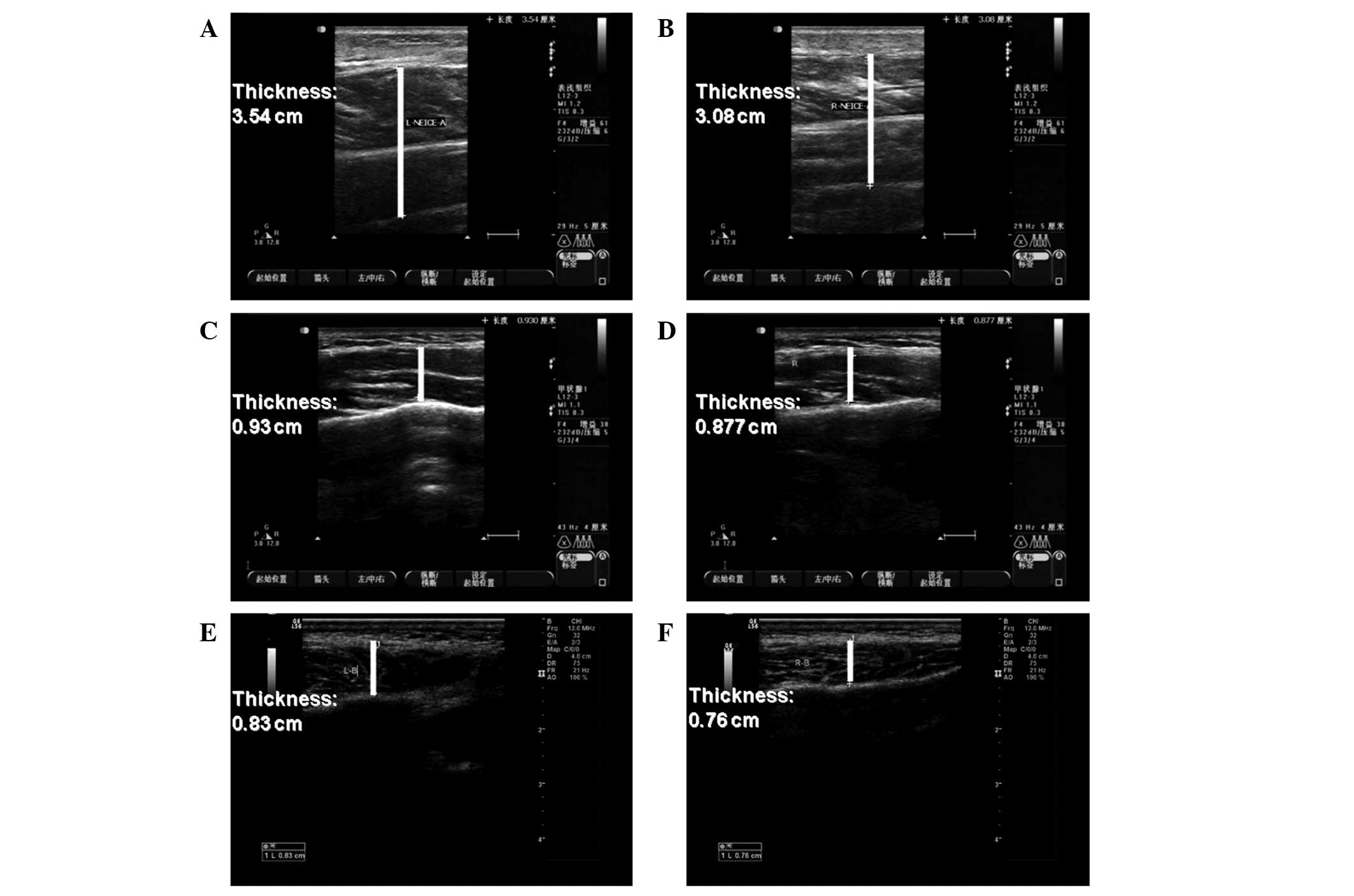 |
Figure 5
|
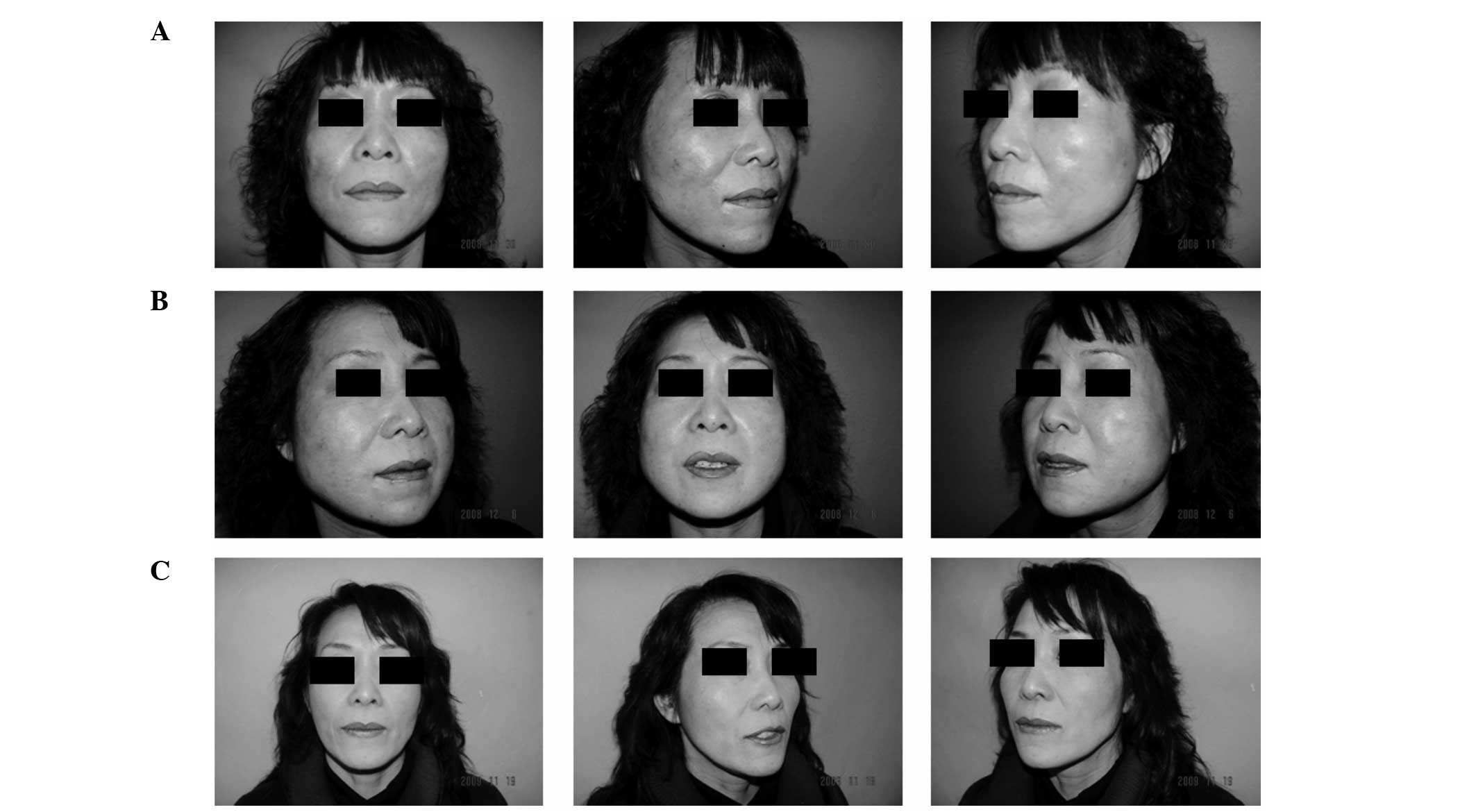 |
Figure 6
|
View References
|
1
|
Al-Ahmad HT and Al-Qudah MA: The treatment
of masseter hypertrophy with botulinum toxin type A. Saudi Med J.
27:397–400. 2006.PubMed/NCBI
|
|
2
|
Hakam MM, Beheiry MG and Helmy ES:
Surgical management of benign masseteric hypertrophy (B.M.H.).
Egypt Dent J. 41:1435–1440. 1995.PubMed/NCBI
|
|
3
|
Jin Park Y, Woo Jo Y, Bang SI, et al:
Radiofrequency volumetric reduction for masseteric hypertrophy.
Aesthetic Plast Surg. 31:42–52. 2007.PubMed/NCBI
|
|
4
|
Hashimoto T, Kuroda S, Kamioka H, Mishima
K, Sugahara T and Takano-Yamamoto T: Bimaxillary protrusion with
masseter muscle hypertrophy treated with titanium screw anchorage
and masseter surgical reduction. Am J Orthod Dentofacial Orthop.
135:536–548. 2009. View Article : Google Scholar : PubMed/NCBI
|
|
5
|
Özkan BT, Tabrizi R and Cigerim L:
Management of bilateral masseter muscle hypertrophy. J Craniofac
Surg. 23:14–16. 2012.
|
|
6
|
Peretta R, Melison M, Meneghello R, et al:
Unilateral masseter muscle hypertrophy: morphofunctional analysis
of the relapse after treatment with botulinum toxin. Cranio.
27:200–210. 2009.PubMed/NCBI
|
|
7
|
Andrade NN and Deshpande GS: Use of
botulinum toxin (botox) in the management of masseter muscle
hypertrophy: a simplified technique. Plast Reconstr Surg.
128:24–26. 2012. View Article : Google Scholar : PubMed/NCBI
|















